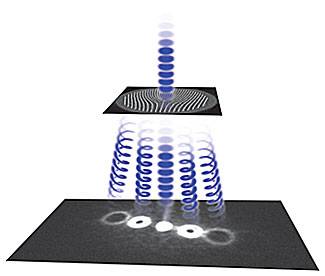Electron microscopes are among the most widely used scientific and medical tools for studying and understanding a wide range of materials, from biological tissue to miniature magnetic devices, at tiny levels of detail. Now, researchers at the National Institute of Standards and Technology (NIST) have found a novel and potentially widely applicable method to expand the capabilities of conventional transmission electron microscopes (TEMs). Passing electrons through a nanometer-scale grating, the scientists imparted the resulting electron waves with so much orbital momentum that they maintained a corkscrew shape in free space.
|
|
NIST researchers twisted the flat electron wave fronts into a fan of helices using a very thin film with a five-micron-diameter pattern of nanoscale slits, which combines the wave fronts to create spiral forms similar to a pasta maker extruding rotini.
--Credit: B. McMorran/NIST
…

Add new comment